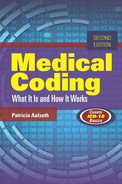Why You Need to Know About Medical Coding
Medical coding affects everyone’s life, whether we realize it or not. Do these occurrences sound familiar?
You receive a bill from your doctor’s office for a “balance due,” or maybe even “past due.” You don’t remember receiving a previous bill for these charges.
Your insurance company sends you an “explanation of benefits” to tell you they are not going to pay for anything.
You are turned down for life insurance because of your “unfavorable history,” even though you have always been healthy.
Your coinsurance portion of the fees for your surgery turns out to be more than the amount you were quoted because “the code is different.”
Medical coding influences which medical services are paid, how much is paid, and whether a person is considered a “good risk” for insurance coverage. Quite simply, if there are errors that are not understood, the individual may pay too much or, worse, may not be able to obtain health insurance coverage at all. Medical coding can have a fundamental impact on the quality of a person’s life.
Medical coding is also a dynamic career choice with growth projected at 21% through 2020.1 Medical Coding: What It Is and How It Works will explain for you just what the title says. In a clear and straightforward manner, you will get an overview of the evolution of medical coding and all the various coding systems, how they relate to one another, and how they function. This book provides information about coding that can help you decide what the profession is all about and whether it is the right occupation for you.
For those working in the healthcare field but outside of the coding profession, this book can be of great value as well. Those involved in healthcare finance, accounting, law, business, medical practice office management, health insurance, and so on, should have a basic understanding for how medical coding works. Although these individuals do not perform hands-on coding themselves, it is important for them to understand the basic systems and processes that drive billing, reimbursement, insurance coverage determinations, and more. These folks should consider this the ideal coding book for the noncoder.
What Is Medical Coding?
Medical coding is best described as translation. The original language is the medical documentation about the diagnoses and procedures related to a patient. This information is converted, through the coding process, into a series of characters that describe the diagnoses or procedures in a standard manner.
Variations in medical language usage can be found in different geographic locales. The sophistication of terms used also varies among different types of medical personnel. Coding the language is a method of grouping medical statements with the same meaning.
Example: R55 Syncope and collapse
Includes: Blackout, fainting, syncope, vasovagal attack
Coded medical information is used for patient care, research, reimbursement, and evaluation of services.
Where to Look for Information
This book is organized into seven chapters covering all aspects of medical coding.
CHAPTER 1: MEDICAL CODING IN HISTORY
From the Black Death in 16th-century London to the multibilliondollar price tag for the change to ICD-10-CM on October 1, 2015, coding has served as a mirror of societal conditions.
CHAPTER 2: DIAGNOSIS CODING: A NUMBER FOR EVERY DISEASE
The ICD-10-CM has more than 69,000 different diagnosis codes. This chapter will help you understand the structure and format of ICD-10-CM and the process of assigning codes to specific medical conditions.
CHAPTER 3: PROCEDURE CODING: LOCATION, LOCATION, LOCATION
Every service a patient receives must be enumerated for statistical and billing purposes. The type of procedure, who performs it, and where it is performed determine which coding system is used. This chapter provides information about ICD-10-PCS, CPT, and HCPCS procedure coding.
CHAPTER 4: HOW CODES ARE USED FOR REIMBURSEMENT
Why is the same procedure paid at a different rate if performed in a doctor’s office as opposed to a hospital-based clinic? How can a broken hip affect the hospital’s reimbursement for a heart-attack patient? This chapter covers payment mechanisms based on coding.
CHAPTER 5: CODING FOR DOLLARS
Tying coding to reimbursement opened the door to potential healthcare organization attempts to “game the system” with fraudulent coding to get more money from payers. What steps have been taken to prevent this? What are the current ethical dilemmas of coders today?
CHAPTER 6: SOLVING YOUR HEALTHCARE CODING PROBLEMS
What can you do if your insurance claims are turned down due to coding disputes? This chapter provides direction on how to analyze the problem as well as resources you can access by phone, mail, or the Internet.
CHAPTER 7: CODING AS A CAREER
Popular magazines contain tantalizing ads that claim you can code at home or run your own medical billing service and make mega-bucks. The reality of a coding career does not always involve huge financial return, but coding is guaranteed to be challenging and intriguing. Check out this chapter to see what skills are needed for success.
APPENDICES
In addition, appendices at the back of the book contain specific national rules and regulations about coding and billing. Take a look at these to see if any problems you are having could be due to someone not following the rules. A single character error in a diagnosis or procedure code could cost you.
__________
1 Bureau of Labor Statistics, U.S. Department of Labor, Occupational Outlook Handbook, 2012-13 Edition, Medical Records and Health Information Technicians. Retrieved December 9, 2013, from http://www.bls.gov/ooh/healthcare/medical-records-and-health-information-technicians.htm
